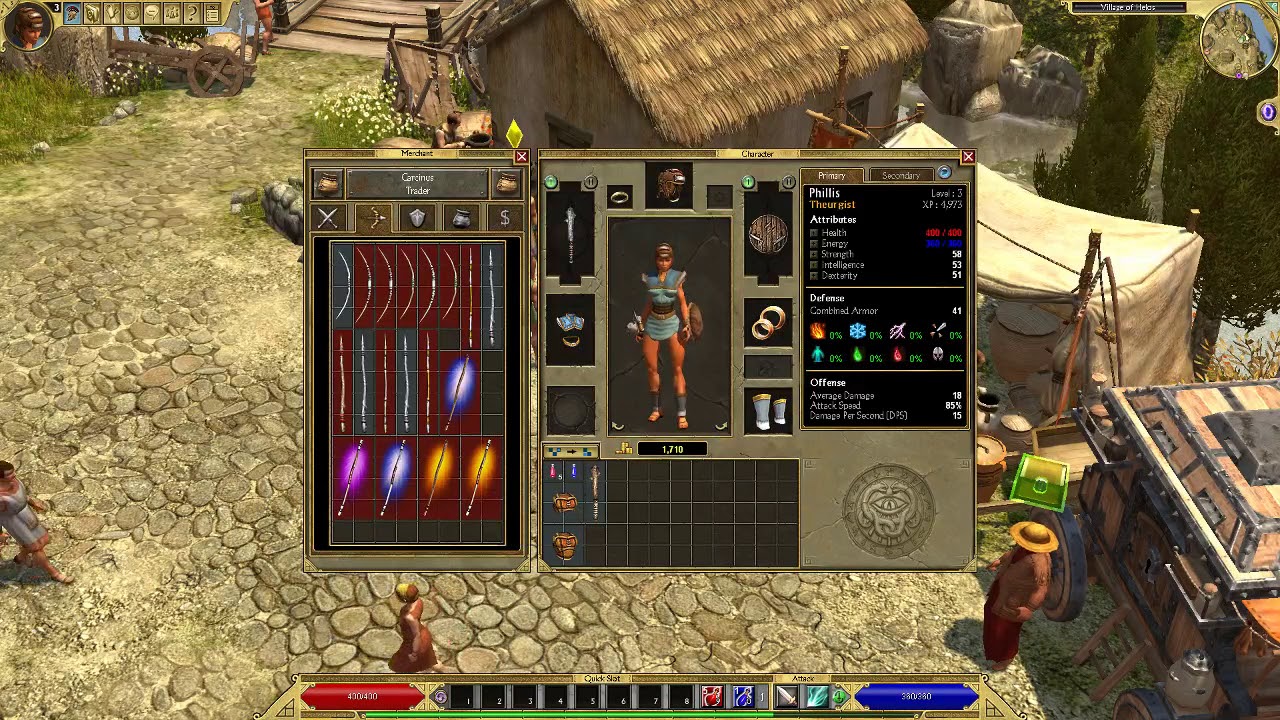In a tale that underscores the often-unpredictable path of video game development and the eccentricities of corporate decision-making, the highly anticipated Titan Quest 2 has recently arrived, marking a triumphant return that almost never happened. This isn`t just a story of a long-awaited sequel; it`s a fascinating look back at a peculiar rejection two decades ago, driven by reasons that today seem more fitting for a comedy sketch than a serious business meeting.
A Franchise Ignored: The 2006 Paradox
Picture this: it`s 2006. The original Titan Quest, a hack-and-slash action RPG set in ancient mythologies, is a quiet success, selling consistently and establishing a loyal fanbase. Naturally, a sequel seems like a logical next step. Developer Iron Lore Entertainment, under the then-publisher THQ, dives into creating a proof-of-concept demo for Titan Quest 2. Three months of dedicated effort culminated in a demo that, by all accounts, was a solid representation of the team`s vision.
However, the journey from concept to greenlight proved to be anything but straightforward. According to Richard Browne, former THQ vice president of studio operations, the internal marketing department delivered a resounding “no.” And their reasoning? A captivating blend of pseudo-scientific analysis and remarkably superficial judgment.
The Rise of “Emsense”: When Machines Judged Creativity
One of the primary architects of the rejection was a rather novel (and, in retrospect, perplexing) piece of technology known as “Emsense.” This system, straight out of a not-quite-dystopian sci-fi novel, employed sensors to monitor players` physiological responses – their heart rate, breath rate, and other biometric data – to gauge their emotional engagement with a product. The idea was to move beyond subjective feedback and tap into the raw, unbiased emotional truth.
In the case of Titan Quest 2, Emsense delivered its verdict: the demo “didn`t resonate.” This pronouncement, stemming from a collection of biological signals, effectively sealed the project`s fate, at least for a time. It’s a moment that highlights the peculiar tension between artistic endeavor and the allure of quantifiable, “scientific” market research. One can almost hear the gears grinding in a boardroom, as spreadsheets of heart rate data trumped the inherent appeal of a promising game concept.
“The original Titan Quest was one of those games that just sold and sold; but our marketing department didn`t see it,” Browne recounted. “We had a great 360 demo with the camera lower and controlled – they nixed it using `Emsense` to show that the demo (three months work) didn`t resonate.”
The Un-PR-Friendly Designer: Attire Over Aptitude
As if a machine dictating creative destiny wasn`t enough, the marketing team also harbored concerns about the game`s lead designer, Brian Sullivan. His perceived offense? He was deemed “not being PR friendly.”
Browne fondly recalled Sullivan as “a khaki shorts, black socks, and loafers kinda guy.” This seemingly innocuous fashion choice, a preference for comfort over corporate polish, was apparently enough to raise red flags within the marketing department. In an industry where creativity and innovation are paramount, the notion that a designer`s attire could derail a potential blockbuster is, to put it mildly, an anachronism. It underscores a corporate culture that sometimes prioritizes superficial presentation over genuine talent and vision.
From Shelved Dreams to Early Access Triumph
After nearly two decades in the wilderness of rejected concepts and missed opportunities, the prophecy of a Titan Quest sequel has finally materialized. Under the stewardship of THQ Nordic and developed by Grimlore Games, Titan Quest 2 recently launched into early access on PC. And the market`s response? A resounding affirmation that the “Emsense” and sartorial judgments of 2006 were, perhaps, a touch misguided.
Within its first three days, the early access version of Titan Quest 2 sold an impressive 300,000 copies. This immediate success serves as a powerful vindication, demonstrating that the appetite for the franchise was always there, patiently waiting to be fed. The game is slated for a full release on PlayStation 5 and Xbox Series X|S, broadening its reach far beyond the PC confines of its initial, aborted attempt.
Lessons from the Labyrinth of Development
The saga of Titan Quest 2 is a fascinating microcosm of the broader video game industry. It`s a testament to how subjective biases, evolving technologies (and their sometimes-dubious interpretations), and even personal aesthetics can influence critical business decisions. It reminds us that while data can be a valuable tool, it should rarely be the sole arbiter of creative potential or market demand.
Ultimately, this story is a celebration of perseverance – both for the franchise itself and for the enduring appeal of quality game design. It’s a delightful irony that what was once deemed emotionally unengaging and PR-unfriendly has now found its rightful place, proving that sometimes, the market truly does know best, even when a machine (or a marketing department) suggests otherwise.

